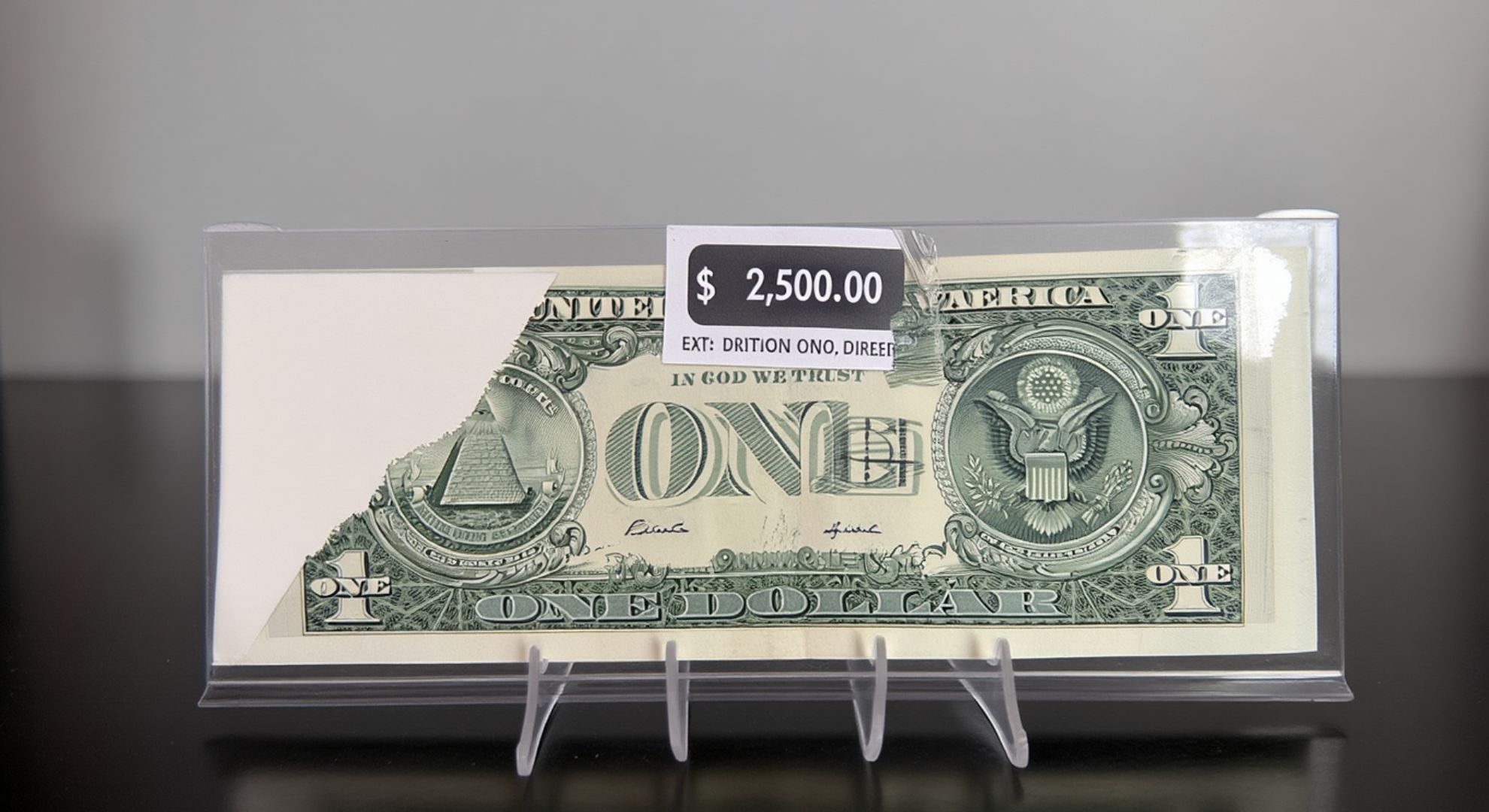It’s the kind of thing most people would never notice — a small error on a single dollar bill. But for collectors, that tiny flaw can mean big money. Across online auction sites and private forums, a specific $1 U.S. banknote with a rare misprint is now fetching several thousand dollars. And what’s more surprising: millions of these bills may still be out there, sitting unnoticed in drawers, wallets, or old shoeboxes.
This isn’t about ancient currency or limited-edition prints. It’s about a very modern error that turned an everyday object into a collector’s jackpot.
The story behind the $1 misprint
In 2014 and 2016, the Bureau of Engraving and Printing made a rare printing mistake — not once, but twice. Two batches of $1 bills were printed with the exact same serial numbers, one in Washington D.C., the other in Fort Worth, Texas. This accidental duplication resulted in what’s now called the “duplicate serial number misprint” — a production anomaly involving 6.4 million pairs of identical notes.
Under normal circumstances, every dollar bill has a unique serial number. But due to a communication error, these two batches weren’t cross-checked, leading to an unknown number of duplicate bills entering circulation. The error wasn’t publicly acknowledged for years.
“It’s one of the most remarkable printing mistakes in modern U.S. currency history — and it went unnoticed for quite a while,” says Ben Smith, a paper money collector and appraiser.
The result? A modern treasure hunt — and serious value for anyone lucky enough to find one.
What makes it valuable?
On their own, these notes may only be worth $1 or $2 to collectors. But when two matching serial numbers are reunited as a pair, they can fetch eye-watering sums. In some cases, a matched pair has sold for over $7,500, depending on condition.
That value comes not just from rarity, but from the challenge: finding both halves of a duplicated serial number in decent condition is extremely difficult. Most people never realized they had something special. Many bills have been lost, torn, or spent. The few that remain — especially in pairs — are now in extremely high demand.
The only list you need: how to know if your $1 bill is rare
Check your wallet or your stash of old bills. Look for:
- Series year: 2013 — this is printed on the face of the bill
- Federal Reserve Bank indicators: either “B” for New York (Fort Worth print) or “B” again (Washington print)
- Serial numbers ranging from B00000001★ to B00250000★ or B03200001★ to B09600000★
- A small “FW” near the bottom-right corner for Fort Worth bills (the Washington notes do not have it)
If your note falls within these criteria, you may have one of the infamous duplicates. And even if you only have one half of a potential pair, there’s hope: several online platforms connect collectors looking to match their bills.
Where these bills are being sold
Online auction platforms like eBay, Heritage Auctions, and specialized collector forums have seen a surge in listings for these notes. A verified matching pair in excellent condition can reach $4,000 to $7,500, depending on demand.
Even single notes — when confirmed as part of the misprint range — can sell for $100 or more, especially if they’re crisp, uncirculated, or have rare serial patterns (like repeating digits or palindromes).
Some sellers have even started crowdsourcing their search for matching notes, posting images of their half and offering cash rewards to anyone who finds the other.
Should you sell or hold?
That depends. Some experts believe that prices could continue to rise as more pairs are matched and the remaining unpaired bills disappear. Others think the hype might fade once the initial wave of discovery dies down.
“This is the kind of collectible that grows in value over time — but only if it stays scarce,” says Smith. “The fewer that remain, the more serious collectors will pay.”
If you’re holding a possible match, it may be worth getting it appraised before rushing to sell.
Final thought: a dollar that’s not just a dollar
In a time when most people pay digitally and never look twice at paper money, this story is a reminder: value can hide in plain sight. A forgotten $1 bill, a slight mistake, and a bit of luck — that’s all it takes.
So next time you get change, don’t be so quick to spend it. You might just be holding a small piece of printing history — worth thousands.
